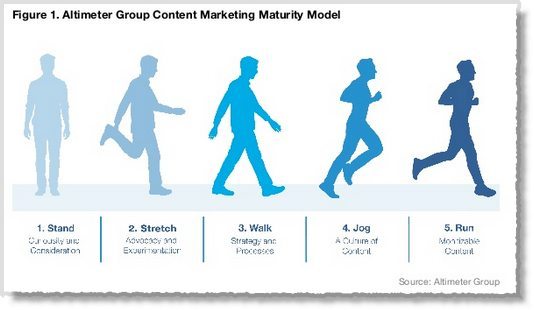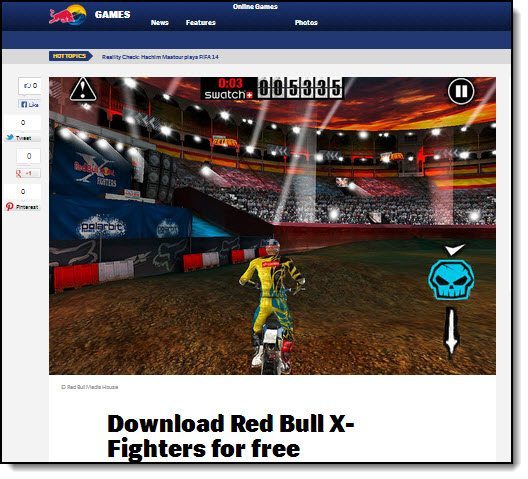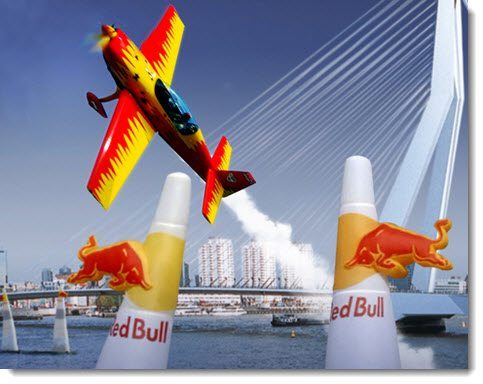The rise of blogging , Facebook and Twitter has made us all publishers.
Add mobile HD cameras mounted to helmets streaming death defying leaps, extreme bike moves and dives and you have an explosion of multi-media creators and publishers. Mobile and modern camera technology coupled with global social networks are providing platforms and networks with the media fodder that are supercharging content distribution and sharing.
Content and media is no longer gathering dust in the bottom draw or the filing cabinet but is published online. Often it is streaming and unedited. It’s real and raw.
Content now comes in a wide variety of formats and media. It can start with a 140 character micro blog (tweet), a video. image or a long form content piece of 2,000 words on your blog. It can even be a 6 second “Vine” video or a filtered snapshot on Instagram taken on a smartphone.
These fast changing opportunities and mediums are presenting the traditional marketer with some thought provoking and uncomfortable choices. You can almost hear the squirming.
Why content marketing upsets traditional marketers
The old school marketing habits and paradigms don’t cut it anymore because content marketing requires a different way of thinking. It flips the marketing model in many ways.
- Pull rather than push. Its about attracting the customer to you rather than pushing advertisements. That’s different.
- Entertain and educate first and sell second. Traditional marketing never heard of the term educate.
- You don’t talk about your product. Mentioning your product in content marketing is inappropriate. The old school thinking struggles with that.
- You must think and act like a publisher not an advertiser. That is not in the comfort zone.
- You operate in real time. This means you have to be thinking about “continuous marketing” as well as being campaign focused. That’s demanding.
- Need different resources. This includes staff and software. The status quo is being challenged.
- Needs a different culture. Publishing culture is different to an advertising mindset. Newsrooms, reporting and editing are a world apart from corporate marketing and advertising.
These mind warps are presenting some challenges and potential disruption to the marketing department and the CEO. What are the obstacles in moving from traditional mass media habits to a publisher paradigm?
The challenges to becoming a media company
The challenges come from many angles. Some are larger than others. It means adopting a flexible mindset that is open to change. That in itself is a challenge.
Here are a few to keep in mind as you move to a content marketing culture that embraces the new.
- Re-allocation of resources. It is hard to discard old habits but it requires a hard look at what isn’t working or appropriate and try something new.
- Re-educating the team. It will mean sometimes forgetting what was taught at university or college because most of the changes in media are mostly less than a decade old. YouTube is not yet 10 years old (founded in 2005), tablets have only been around for 4 years and Facebook was launched in February 2004.
- Changing the culture. Maybe change management is needed.
- Adapting to a mobile content world. Smartphones only exploded into popular culture when the first iPhone was launched in 2007. Websites need upgrading to be “mobile responsive” and content optimisation now has to consider viewing on smartphones.
- Understanding re-purposing of content. With the broad range of multi-media formats (30 plus at last count) and social networks, brands need to understand that we have different preferences for the media we read and watch and the social networks we use to consume them on. Same message but different media.
- Developing an integrated mindset. This means weaving content marketing into other marketing channels. This includes embedding content marketing in and across all media channels including social, search, email and traditional mass media.
- Creating “conversations around the brand” not about the brand. (Thanks Altimeter for that insightful phrase). This means creating content that has heart and soul of the brand embedded but not mentioned.
So what does this adaptation look like?
The content marketing stages
Content marketing is still embryonic for most companies. Here is how Altimeter sees the stages of content marketing maturity
So let’s take a closer look at the key elements of each phase according to Altimeter.
- Stand: Dabbling in content marketing and may even have a blog but use it infrequently. It’s more about push advertising
- Stretch: Begins to build a strategy and starts taking some first steps. Assigns an internal advocate/sponsor and starts to focus on one or two specific channels.
- Walk: Move from channel specific and starts moving its content across many platforms. Processes are formalized and a team begins to take shape. Governance and the ability to scale are emerging.
- Jog: This is where a culture of content is noticeable. The company is seriously committed to content marketing. Content moves from simple to more engaging and experiential. Relationships with agencies move from campaign focused to long term. Still struggles with how to integrate with other media channels.
- Run: This is where the brand becomes a bona fide media company. It even monetises content. It is able to make money from innovative and highly polished content. Production and creative are now often a full standalone unit
What is an example of a company that is at the run stage?
Red Bull the “media company”
Red Bull is an Austrian company that was founded in 1987 that sells the most popular energy drink in the world, with 5.2 billion cans sold in 2012.
It now has a separate stand alone media company with 135 staff. Red Bull has become a media company that just happens to sell an energy drink product.
What do they publish?
The publishing is extensive both in media, channels and formats. It includes mobile apps, print, web TV, web radio, newsfeeds, social networks, video and even a full length film. It owns 900 different domain names spread across 36 languages.
1. Full feature film “The Art of Flight”
This takes publishing and being a media company to the extreme. But that is what the Red Bull “Brand” is about.
Click here to view the embedded video.
2. The “Print” magazine
Red Bull doesn’t stop at digital publishing but also does print. The Red Bulletin has a distribution of 5 million copies a month. This is inserted in newspapers as a free publication.
3. Mobile games
It doesn’t stop at full length moves but also extends to games. Here is the Red Bull X-Fighters mobile game.
4. Events that are captured on media
These are mostly sporting events of some type and includes: diving, Formula One Motorsport, plane racing, snow boarding and cycling just to name a few.
5. Music
Not content with digital media they also sponsor a music school and month long event called Red Bull Music Academy.
6. Epic events on YouTube
One of the most memorable and also one of the most successful media events put together by Red Bull is the “Red Bull Stratos” jump from the edge of space.
Click here to view the embedded video.
The brand awareness created by this content provides some insight into content marketing on steroids. Here are some stats courtesy of Sarahs Faves
- Red Bull Stratos on YouTube had 8 million concurrent views. The previous record was the Curiosity Mars landing at 500,000
- The photo of Felix Baumgartner taken after landing generated 29,000 shares, 216,000 likes and 10,000 comments
- The peak of online mentions of the hashtag #stratos was 194,000
Currently their YouTube channel has received over 600 million views putting them in the top 5 of sports producers on YouTube on the planet.
What is the benefit provided by that level of product awareness? Maybe hard to measure but I am sure they are selling more Red Bull.
What can we learn about content marketing from Red Bull?
There are many lessons to be learned from Red Bull, but here are the top lessons about content marketing we can learn from their public strategy and execution.
- They have learned to entertain first. They understand that if you do this the sales will come.
- They create conversations “around” their brand. No one wants to talk about a drink but they will talk about music, share amazing photos and embed videos that are epic
- They have learned to monetise their content. They licence some of their images and they sell their movie and they also charge you to read their magazine
- They created a focused and powerful content strategy by setting up a separate media company. No distractions allowed from the goal of publishing awesome content.
- They understand the importance of mobile. They have developed apps, games and platforms that work for all devices
- They understand not just quality but quantity. They are “everywhere”
What content marketing lesson are you going to implement today?
What about you?
Do you “get” content marketing. What is your content production record. Good, bad or ugly. What surprises you most about Red Bulls content marketing? Do yu think they are the top content marketing company in the world
What’s your biggest takeaway from their content marketing strategy?
Want to learn how to make your blog a success with social media marketing and contagious content?
My book – “Blogging the Smart Way – How to Create and Market a Killer Blog with Social Media” – will show you how.
It is now available to download. I show you how to create and build a blog that rocks and grow tribes, fans and followers on social networks such as Twitter and Facebook. It also includes dozens of tips to create contagious content that begs to be shared and tempts people to link to your website and blog.
I also reveal the tactics I used to grow my Twitter followers to over 200,000.
The post Is This the Top Content Marketing Company in the World? appeared first on Jeffbullas’s Blog.




